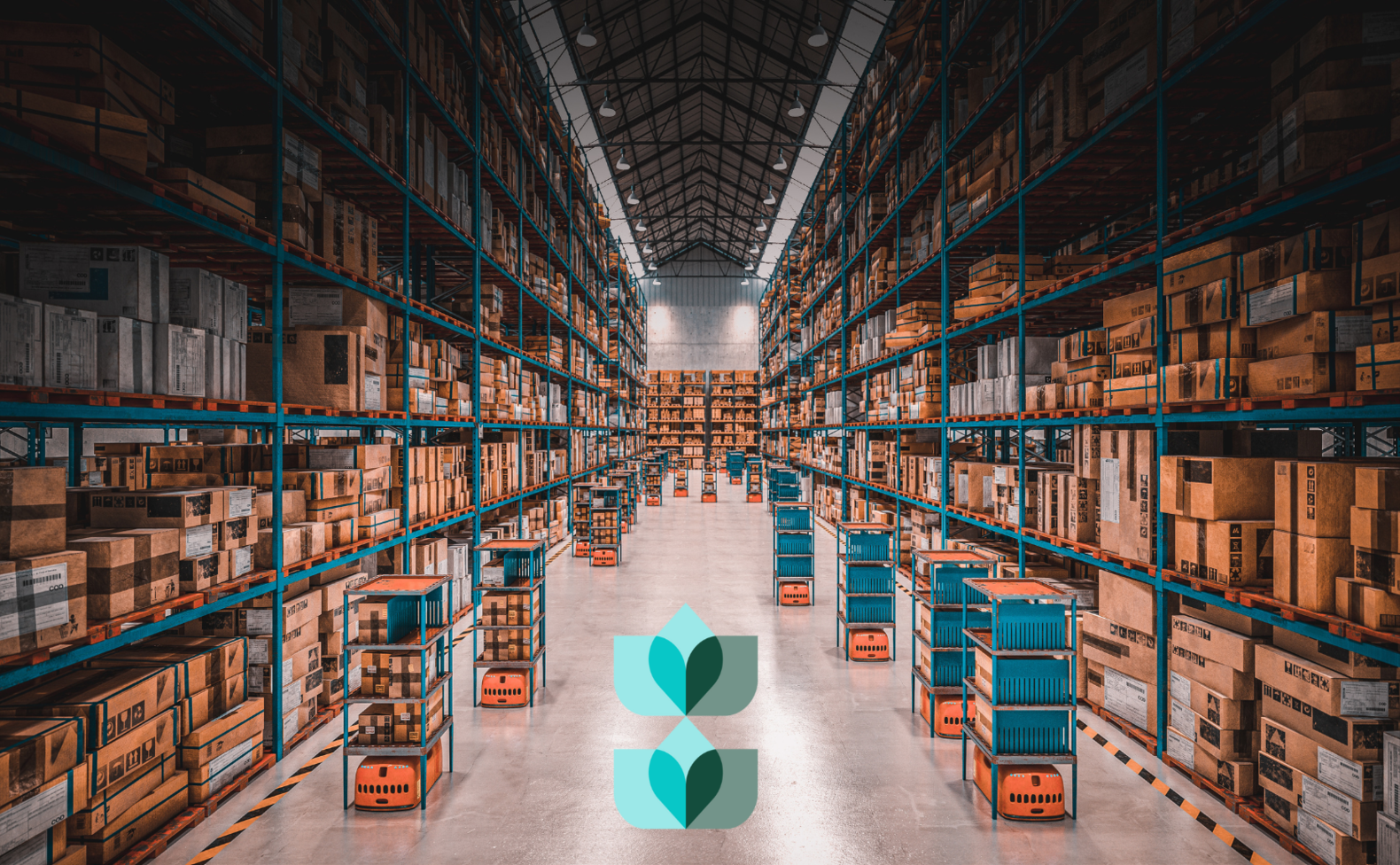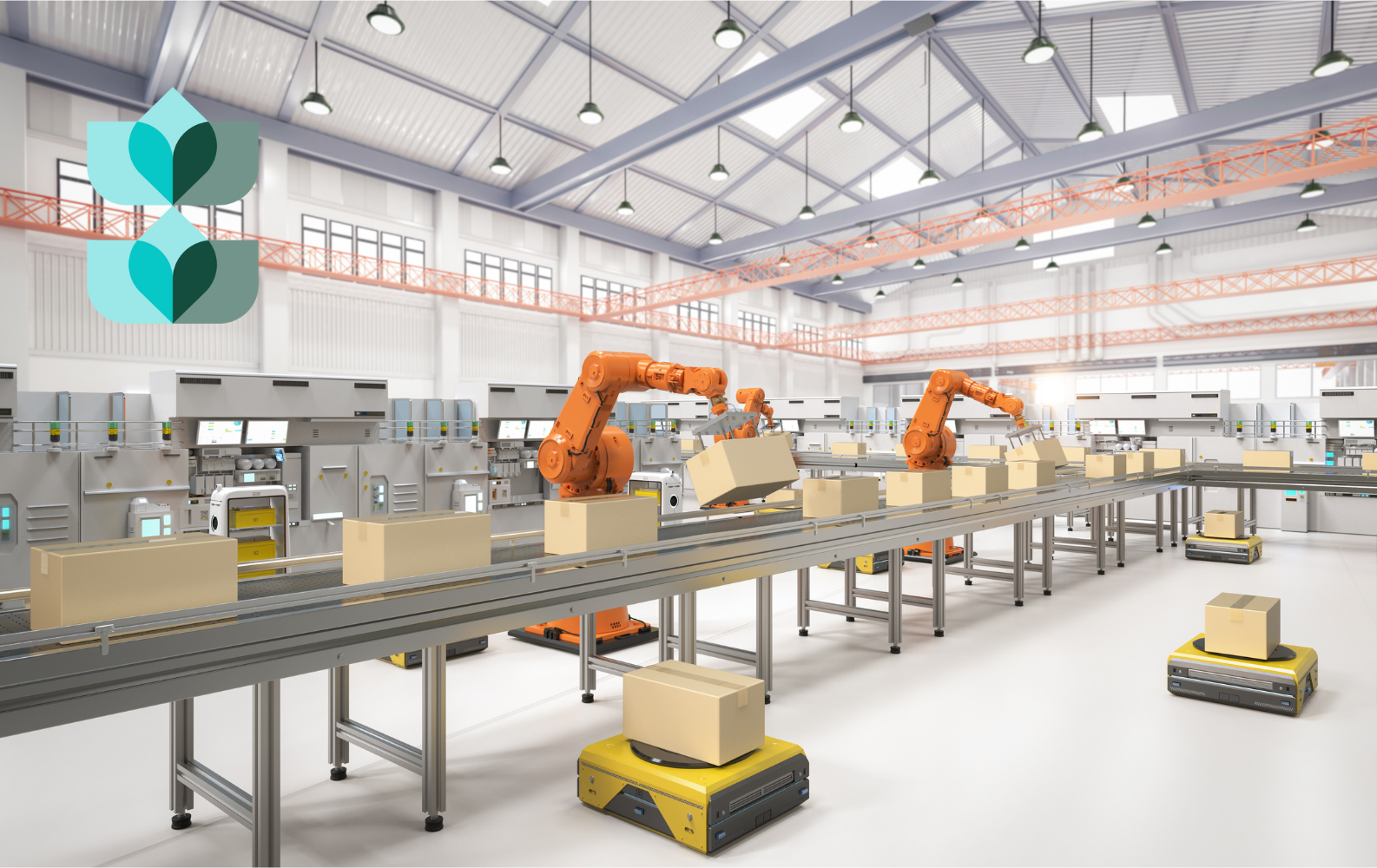In today's fast-paced business environment, organizations must ensure the smooth functioning of their operations. One aspect that plays a significant role in achieving this is Maintenance, Repair, and Operations (MRO). However, the definition of MRO is not always clear to everyone, and its importance is often underestimated. In this comprehensive guide, we will dive deep into the concept of MRO, its various types, and its significance in the success of a business.
MRO Meaning: Maintenance, Repair, and Operations

The primary keyword, MRO meaning, refers to the essential activities and tasks associated with maintaining, repairing, and operating the equipment, facilities, and systems within a business. These activities are necessary for the daily functioning of a company and contribute to its overall productivity and efficiency. MRO encompasses a wide range of tasks, including maintenance of the facility, repair of production equipment, and management of consumable supplies. Although MRO inventory does not directly contribute to the finished product or service offered to customers, it plays a vital role in ensuring that the business operates smoothly and efficiently.
The Importance of MRO in Business Operations

MRO is crucial in various aspects of a business's operations, including cost management, productivity, safety, and overall performance. Here are some reasons why MRO is essential for a business:
-
Reducing disruptions: Proper MRO management helps minimize unexpected equipment breakdowns and downtime, ensuring that the production process runs smoothly.
-
Anticipating and rectifying issues: Effective MRO management can identify potential problems before they occur, allowing businesses to take corrective actions and avoid costly repairs or replacements.
-
Improving inventory management: MRO inventory management helps companies optimize their inventory levels, avoiding stock-outs and minimizing investment in unnecessary inventory.
-
Enhancing safety: MRO activities, such as regular maintenance and repair of equipment and providing personal protective equipment (PPE) to employees, ensure a safe working environment.
-
Increasing productivity: By keeping equipment in optimal condition and reducing downtime, MRO helps maximize a business's productivity, leading to higher revenues and profits.

Types of MRO: A Detailed Breakdown
MRO can be categorized into four primary types, which are further divided into numerous sub-sections:
1. Infrastructure Repair and Maintenance
This type of MRO focuses on keeping the business's facilities in top condition. It includes activities such as:
-
Roof, door, and window repairs
-
Lighting and plumbing maintenance
-
Landscaping and groundskeeping
-
Pest control and waste management
-
HVAC system servicing
2. Production Equipment Repair and Maintenance
This category of MRO aims to ensure that all equipment and systems used in the production process are functioning correctly. It includes the maintenance of:
-
Mechanical and electromechanical machinery (e.g., CNC machines, lathes, drill presses)
-
Electrical and electronic equipment (e.g., computers, servers, calibration devices)
-
Preventive and predictive maintenance activities
-
Corrective maintenance actions in case of equipment failure or incidents
3. Material Handling Equipment Maintenance
This type of MRO involves maintaining the equipment and systems used for transporting raw materials and finished products within the production facility. Examples of material handling equipment include:
-
Conveyor systems
-
Forklifts and pallet positioners
-
Storage systems and bulk containers
-
Automated robotics for pick-and-pack operations
4. Tooling and Consumables Management
This category of MRO deals with the management of smaller tools and consumable items required for day-to-day operations. Examples of tooling and consumables include:
-
Powered and manual hand tools (e.g., drills, wrenches, screwdrivers)
-
Cutting bits, blades, and other replacement parts
-
Adhesives, lubricants, and cleaning supplies
-
Personal protective equipment (PPE), such as gloves, safety glasses, and respirators
MRO Inventory Management Strategies
Effectively managing MRO inventory is critical for optimizing costs, ensuring the availability of essential items, and reducing waste. Here are some strategies businesses can implement to improve their MRO inventory management:
-
Conduct regular inventory audits: Periodic audits can help businesses identify obsolete or excess inventory, minimize stock discrepancies, and optimize inventory levels.
-
Implement efficient inventory tracking systems: Utilizing inventory management software or other tracking systems can streamline the tracking, replenishment, and procurement of MRO items.
-
Leverage vendor-managed inventory (VMI): Collaborating with suppliers to manage MRO inventory can help businesses optimize stock levels, reduce lead times, and improve supply chain efficiency.
-
Adopt demand forecasting and data analytics: Analyzing historical usage data and forecasting future demand can help businesses make informed decisions about MRO inventory levels and procurement.
-
Centralize MRO inventory storage: Establishing a central, controlled location for MRO inventory can enhance visibility, reduce the risk of stock-outs, and facilitate better inventory management.

How Do Businesses Obtain MRO Products and Services?
Businesses can obtain MRO products and services through various channels, depending on their specific requirements and preferences. Here are some common ways businesses acquire MRO products and services:
Suppliers and Distributors
Many businesses establish relationships with suppliers or distributors specializing in MRO products. These suppliers may have a wide range of MRO items available for purchase, such as spare parts, consumables, tools, and equipment. Orders can be placed directly with the suppliers or through their online platforms or catalogs.
Online Marketplaces
Online marketplaces, such as Amazon Business, Grainger, or Alibaba, provide a convenient platform for businesses to browse and purchase MRO products. These platforms often offer a vast selection of items from various suppliers, allowing businesses to compare prices, read reviews, and choose the most suitable products.
Manufacturer's Direct Sales
In some cases, businesses may choose to purchase MRO products directly from the manufacturers. This approach can provide access to original equipment manufacturer (OEM) parts and direct technical support. Manufacturers may have their own sales channels or online platforms for businesses to purchase.
Maintenance Service Providers
Businesses can engage maintenance service providers or MRO companies offering comprehensive maintenance and repair services. These providers often have expertise in specific industries or equipment types and can handle all aspects of MRO activities, including sourcing and procuring the necessary parts and consumables.
Contracts and Agreements
Businesses with long-term MRO needs may enter into contracts or agreements with suppliers or service providers. These contracts can establish pricing terms, service-level agreements, and delivery schedules, providing stability and continuity in the supply of MRO products and services.
In-House Inventory Management
Some businesses choose to maintain their own inventory of MRO products to ensure timely availability. This may involve establishing a dedicated MRO warehouse or storeroom, implementing inventory management systems, and employing staff responsible for procurement and inventory control.
Vendor Managed Inventory (VMI)
VMI is a collaborative approach where suppliers or distributors take responsibility for managing and restocking a business's MRO inventory. The supplier monitors inventory levels and automatically replenishes products when needed. This helps streamline the procurement process and ensure optimal inventory levels without requiring extensive involvement from the business.
It's important for businesses to evaluate their MRO needs and consider factors such as price, quality, lead time, and reliability when selecting suppliers or service providers. Building strong relationships with trusted suppliers, leveraging digital platforms for efficient procurement, and implementing effective inventory management practices can contribute to a streamlined and cost-effective MRO procurement process.
What Sort of Companies Require MRO Products and Services?
.jpg?width=1580&height=976&name=Copy%20of%20Copy%20of%20Copy%20of%20Process%20Manufacturing%20ERP%20(19).jpg)
Many different types of companies and industries require Maintenance, Repair, and Operations (MRO) products and services to support their operations. Here are some examples:
Manufacturing
Manufacturing companies rely heavily on MRO supplies to maintain and repair their production equipment, machinery, and tools. They require a wide range of MRO products, including spare parts, lubricants, electrical components, cutting tools, and safety equipment.
Aviation
Airlines, aircraft manufacturers, and maintenance repair organizations (MROs) in the aviation industry require MRO services and products to ensure the safe and efficient operation of aircraft. This includes maintenance and repair of engines, avionics, airframes, landing gear, and other critical systems.
Automotive
Automobile manufacturers, dealerships, and repair shops require MRO products and services to maintain and repair vehicles. This includes tools, diagnostic equipment, spare parts, lubricants, and other consumables necessary for vehicle maintenance and repair.
Energy and Utilities
Power generation plants, oil refineries, and utility companies require MRO supplies to keep their equipment, such as turbines, boilers, transformers, and pipelines, in good working condition. This helps ensure efficient energy production and delivery.
Construction
Construction companies require MRO products for maintaining and repairing their construction machinery, vehicles, and tools. They also need MRO supplies for building maintenance, including HVAC systems, electrical equipment, plumbing fixtures, and safety gear.
Facilities Management
Companies that manage commercial buildings, offices, hospitals, hotels, and other facilities need MRO supplies to maintain and repair the infrastructure. This includes lighting fixtures, plumbing systems, HVAC equipment, elevators, and other building components.
Transportation and Logistics
Transportation companies, including trucking fleets, shipping lines, and railways, require MRO products and services for the maintenance and repair of their vehicles, locomotives, containers, and infrastructure.
These are just a few examples, and MRO needs can vary widely depending on the industry. Essentially, any company that relies on equipment, machinery, or infrastructure to operate efficiently and safely will require MRO products and services to support its ongoing maintenance and repair efforts.

Typical Costs of Implementing MRO Products and Services
The cost of MRO products and services can vary widely depending on several factors, including the type of industry, the specific requirements of the organization, the complexity of the equipment or systems being maintained, and the scale of operations. Here are some key considerations regarding the expenses associated with MRO:
Variety and Complexity of Equipment
Industries with a diverse range of complex equipment, such as aviation, manufacturing, or energy, may require specialized and high-cost MRO products and services. The complexity and sophistication of the equipment often correspond to higher expenses.
Quality and Performance Requirements
Certain industries, such as aerospace or healthcare, demand strict quality and performance standards. Meeting these requirements can increase the cost of MRO products and services, as they may need to adhere to specific regulations or certifications.
Criticality of Systems
MRO expenses can be higher for equipment or systems that are critical for business operations or safety. In such cases, organizations may invest more in preventive maintenance, inspections, and high-quality components to minimize the risk of failure and downtime.
Maintenance Strategy
The maintenance strategy employed by an organization can impact the cost of MRO. Reactive or breakdown maintenance can lead to higher expenses due to unplanned repairs and the potential for equipment damage. Conversely, proactive approaches, such as preventive or predictive maintenance, can help identify and address issues before they escalate, potentially reducing long-term costs.
Vendor Relationships
The choice of suppliers or service providers can influence MRO costs. Establishing strategic partnerships, negotiating contracts, and leveraging economies of scale can help organizations obtain favorable pricing and discounts.
Inventory Management
Effective management of MRO inventory is crucial to controlling costs. Overstocking can tie up capital and lead to wastage while understocking can result in production delays or higher emergency procurement costs. Optimizing inventory levels and adopting efficient inventory management practices can help minimize expenses.
It's important to note that while MRO expenses can be significant, the costs associated with unexpected breakdowns, production downtime, or safety incidents can be even more detrimental to businesses. Therefore, investing in appropriate MRO products, services, and maintenance practices is often considered a necessary expense to ensure operational efficiency, productivity, and safety in many industries.
How Can MRO Be Leveraged Through ERP Software?
.jpg?width=1580&height=976&name=Copy%20of%20Copy%20of%20Copy%20of%20Copy%20of%20Process%20Manufacturing%20ERP%20(2).jpg)
Enterprise Resource Planning (ERP) systems can be closely associated with Maintenance, Repair, and Operations (MRO) activities in certain industries. ERP refers to software systems that integrate various business processes and functions within an organization, such as finance, human resources, procurement, inventory management, and more.
Regarding MRO, ERP systems can play a crucial role in streamlining and managing the MRO-related processes and data within an organization. Here's how ERP can be connected to MRO:
Procurement
ERP systems can handle the procurement process for MRO supplies and spare parts. They can automate and streamline the purchasing process, manage vendor relationships, track inventory levels, and generate purchase orders for MRO items as needed.
Inventory Management
ERP systems can provide real-time visibility into MRO inventory levels, locations, and usage. This allows organizations to optimize inventory levels, track stock movements, and plan maintenance and repair activities more effectively.
Work Order Management
ERP systems can facilitate the creation and management of work orders for maintenance and repair tasks. They can track work order status, allocate resources, schedule technicians, and manage task assignments. This helps ensure that MRO activities are executed in a timely and organized manner.
Asset Management
ERP systems can be a centralized repository for managing asset information, including equipment maintenance histories, warranty details, and service contracts. This enables organizations to track and schedule preventive maintenance tasks, identify recurring issues, and make informed decisions regarding equipment repairs or replacements.
Financial Management
ERP systems can integrate MRO activities with financial processes, such as budgeting, cost tracking, and reporting. This allows organizations to analyze MRO costs, allocate expenses to appropriate cost centers and monitor the financial impact of maintenance and repair activities.
By integrating MRO-related functions into an ERP system, organizations can enhance visibility, improve coordination, and increase efficiency in managing maintenance, repair, and operations. It enables better control over MRO processes, reduces downtime, optimizes inventory, and supports informed decision-making regarding maintenance and repair strategies.
Devoted to offering business's the most comprehensive software available on the market, Inecta's plethora of cutting-edge ERP solutions can help your business facilitate MRO products and services through one of its industry-specific solutions. If you're interested in finding out how Inecta can help your business in particular with its current MRO pain points, fill out this form to schedule a demo with one of Inecta's trusted ERP specialists!











Free Valuable Resource!
3 simple steps to find your Food ERP
Free Valuable Resource!
3 simple steps to find your Food ERP
*We will never sell your information. Keeping your data and privacy secure is our highest concern.